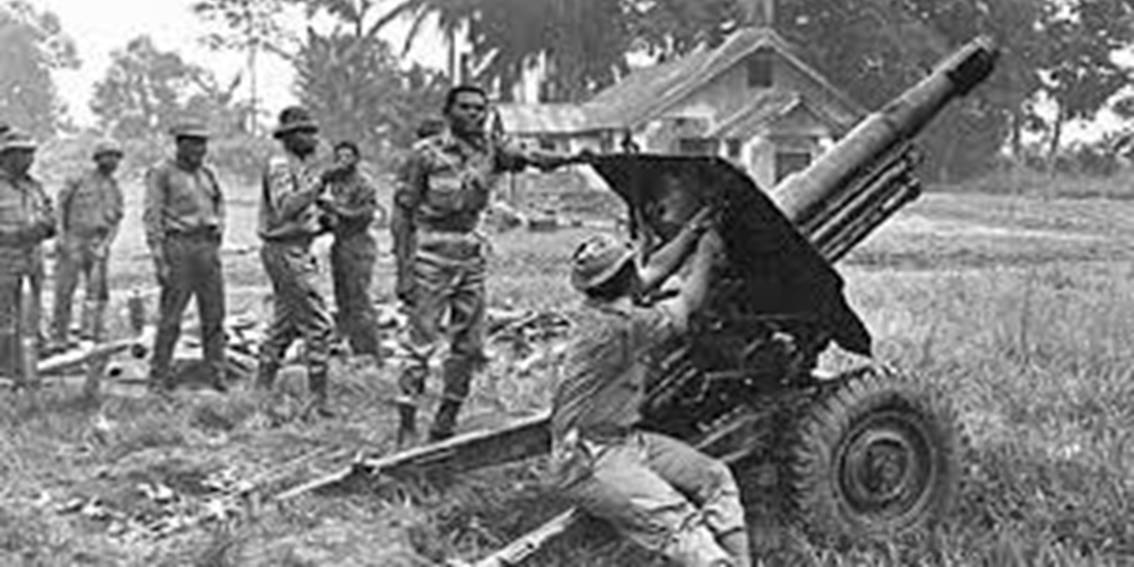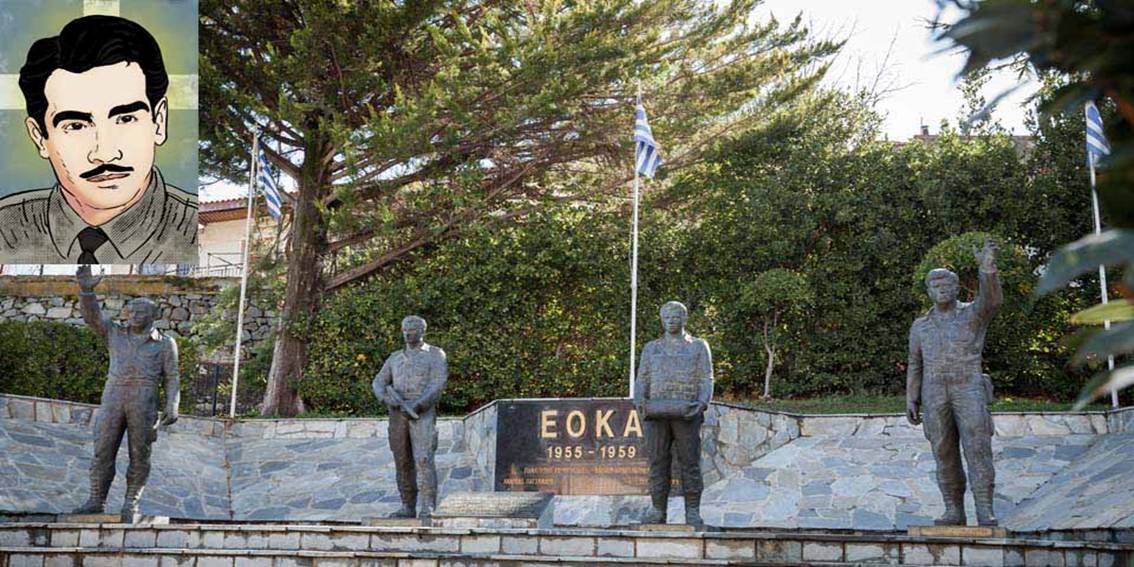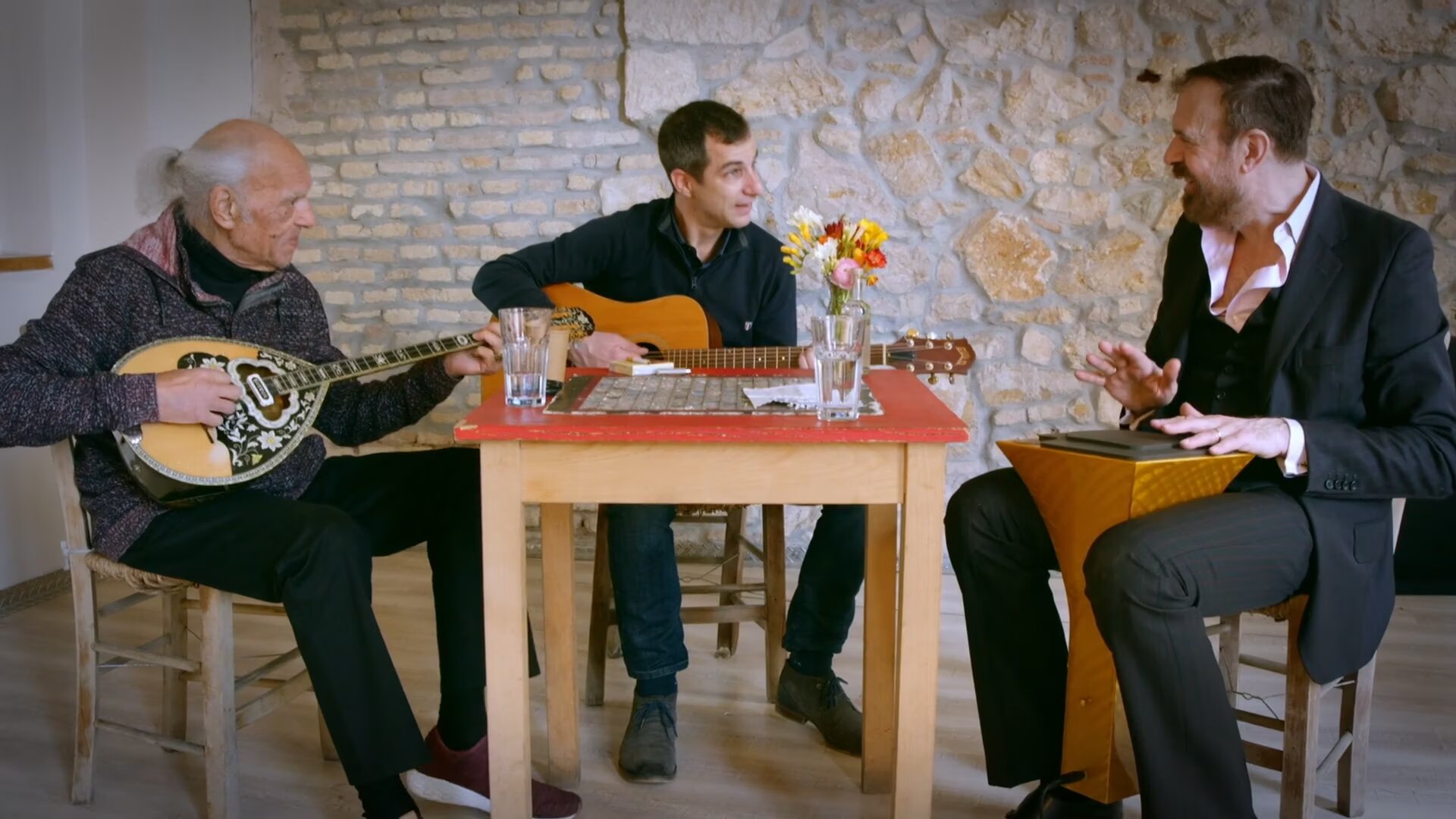A Nation Divided
The Battle of Kofinou: By late 1967, Cyprus was a nation straining under internal and external pressures. President Archbishop Makarios III led the island’s government and was pursuing a policy of non-alignment. His government sought to reduce the influence of the military junta then ruling Greece. This stance created a dangerous rift with General George Grivas, the Greek-Cypriot commander of the Cypriot National Guard. Grivas, a hardliner nationalist, was a fervent advocate for Enosis—political union with Greece. He and his loyalist officers within the National Guard began operating with increasing autonomy, directly challenging the civilian government in Nicosia.
The Kofinou Flashpoint
The mixed village of Kofinou, situated at a vital crossroads in the Larnaca district, became the epicentre of the escalating crisis. Greek Cypriot forces loyal to Grivas had established a tight military blockade around the Turkish Cypriot enclave within the village. This aggressive manoeuvre threatened the well-being of the enclave’s population and created a clear pretext for a direct military intervention from Turkey. For President Makarios, the siege represented an existential threat. He feared a catastrophic Turkish invasion and saw Grivas’s insubordination as a direct assault on the sovereignty of the Republic of Cyprus.
The Fateful Order
Confronted with this twin peril, Makarios and his cabinet made a critical decision. They resolved to use the full power of the state to crush the rogue military faction and reassert governmental control. The cabinet authorized a military operation, codenamed “Gronthos.” Its objectives were unambiguous: lift the siege of Kofinou, dismantle the illegal military positions, and neutralize the power of General Grivas’s loyalists. This order set a profound precedent—the legitimate government of Cyprus was preparing for combat against a significant portion of its own National Guard.
Mobilizing for a Brother’s War
Preparations for the assault were both swift and deliberate. Government loyalists within the military command secured control of key units, including armoured and artillery divisions. These loyalist forces moved tanks and heavy guns into strategic positions surrounding Kofinou, ensuring they could overpower the well-entrenched defenders. The several hundred men besieging the village were dug in and prepared for a fight, firmly believing they were defending the Hellenic cause. By the morning of November 12, 1967, all the pieces were in place for a bloody internal conflict.
The Assault Begins
Operation Gronthos commenced with a thunderous artillery barrage. Government batteries relentlessly shelled the defensive fortifications that the Greek Cypriot fighters had built. The bombardment aimed to soften these defences and demoralize the defenders before the infantry advance. As the shelling subsided, units of the National Guard, now acting under the direct orders of the Makarios government, began their ground assault. They advanced under covering fire, pushing methodically toward the village outskirts.
Fierce Resistance and Decisive Victory
The defenders, though outgunned, mounted a fierce and determined resistance. The battle quickly devolved into intense close-quarters combat as government soldiers fought to clear trenches and fortified houses. The cacophony of automatic gunfire and grenade explosions filled the air. However, the government’s superior organization and overwhelming firepower proved decisive. Their tanks provided direct fire support, systematically punching holes in the defensive lines. By the afternoon, loyalist forces had breached the inner defences and were engaged in brutal street fighting within Kofinou itself. By day’s end, the government forces had secured the village, but at a high cost: 26 Greek Cypriot fighters and one Turkish Cypriot woman lay dead and 35 defenders were taken prisoner.
Shattering Grivas’s Power
The victory at Kofinou delivered a decisive military and political blow to General Grivas. The operation shattered his power base within the military and demonstrated forcefully that the state would not tolerate rogue elements threatening its stability. The government successfully lifted the siege, thereby removing the immediate pretext for a Turkish invasion. However, the repercussions of the battle extended far beyond the village itself.
The Turkish Ultimatum
Turkey, while halting its immediate invasion plans, reacted with fury to the events. The Turkish government issued a stern ultimatum to Greece, demanding the immediate withdrawal of all illegal Greek military personnel from Cyprus and the removal of General Grivas. Facing the very real prospect of war with Turkey, the junta in Athens had no choice but to comply. They recalled Grivas to Athens and began a significant drawdown of the thousands of Greek troops who had been clandestinely stationed on the island. This outcome significantly reduced direct Greek military influence in Cypriot affairs for several years, marking a key strategic victory for Makarios.
A Trauma in the National Psyche
The Battle of Kofinou remains one of the most complex and painful episodes in modern Cypriot history. For many Greek Cypriots, the event was a traumatic civil conflict, a “battle between brothers.” The devastating image of the National Guard attacking its own, resulting in Greek Cypriot deaths at the hands of other Greek Cypriots, left deep and lasting scars on the national psyche.
A Necessary Act of State
Yet, from the perspective of the Cypriot state, Operation Gronthos was a necessary act of self-preservation. Makarios had chosen to confront an internal enemy to avert an apocalyptic war with Turkey. The battle successfully reasserted, for a time, the authority of the legitimate government over a mutinous military faction.
An Unresolved Crisis
However, the underlying ethnic tensions and geopolitical rivalries that fuelled the crisis remained entirely unresolved. The fragile stalemate that followed Kofinou lasted for only seven years, until it spectacularly collapsed in the cataclysm of the Turkish invasion of 1974. The battle, therefore, stands not as a solution, but as a stark testament to the immense and ultimately unsustainable pressures that tore at the fabric of the Cypriot republic.




